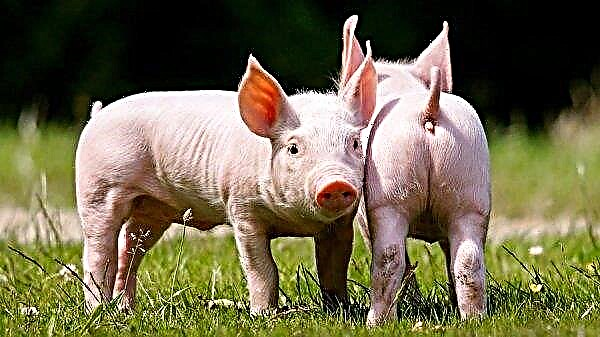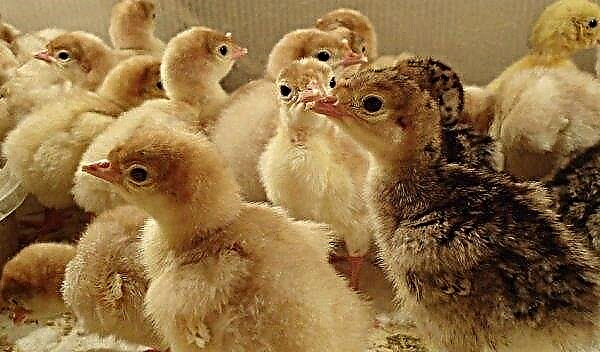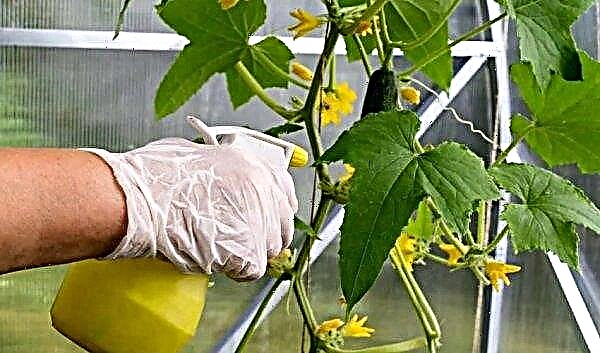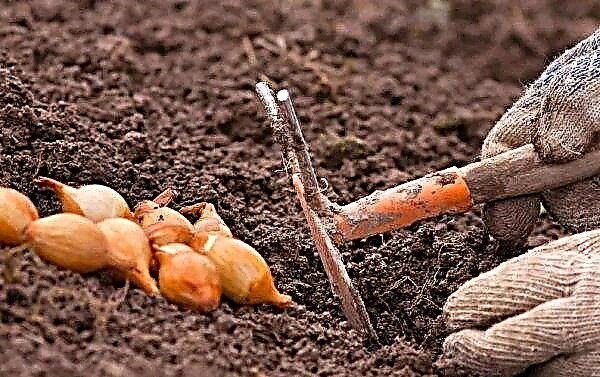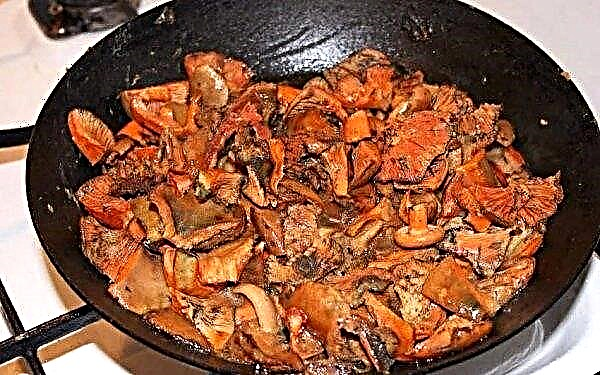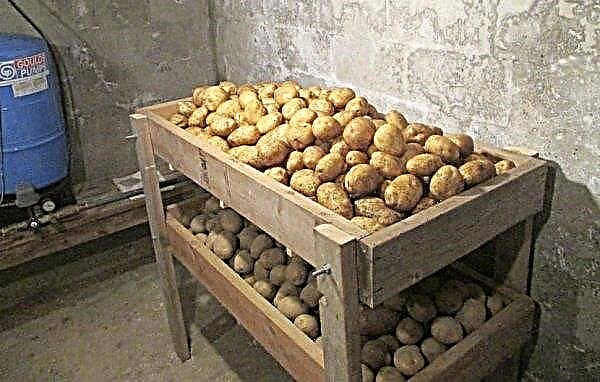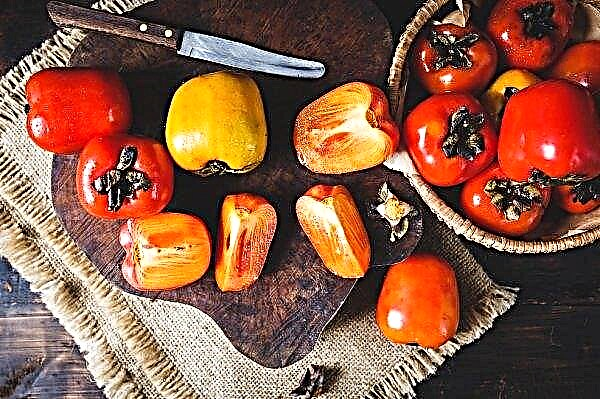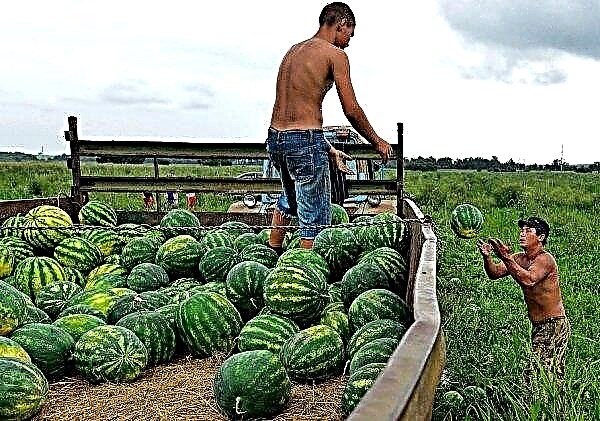Translated from the Latin language, "Primula" means "early." A perennial herb with this name is one of the first to adorn the spring garden with delicate flowering. The primrose can bloom even before the snow has completely melted, and then it stands out against its background in bright colors. An original variety of primrose Rosanna apricot will look especially beautiful in the garden.
Description of Primrose Rosanna Apricot
Terry primrose belongs to the family Primrose. A large number of petals, as well as their magnificent shape, is a distinctive feature acquired as a result of selection, so that it is impossible to meet a multi-petal primrose in nature. Apricot variety Rosanna also belongs to such a hybrid stemless species.

Main external characteristics:
- compact and neat-shaped bush;
- dense foliage at the base;
- the bush is covered with a cap of multi-petal "roses";
- flowers are large, fully double;
- characteristic apricot hue of the petals.
The variety is decorative. Thanks to the beautiful lush leaves, the bush looks attractive even without flowers.
Agriculture Terry Flowers
In the issue of agricultural technology, garden primrose is no different from other terry flowers.
Important aspects to consider are the following:
- A shaded area is ideal for planting.
- The soil should be light and well fertilized.
- The soil may be slightly acidic, well loosened.
- The flower prefers organic fertilizers.
- The plant does not tolerate drought.
- Easy to take root after transplantation.
- It is necessary to periodically divide the flower.
Terry species adapted to adverse weather conditions and safely tolerate winterwithout needing additional shelter. However, waterlogged soil in the cold season leads to the most negative consequences for terry primrose, so it’s worth filling the circle around the trunk with a mixture of nutrients or dry leaves.

If the climate in the region is too harsh, you can cover the bushes with film, or in general, transplanted into containers, placed for the winter in a warm place. Terry flowers are perennial, but they should not be left in one place for more than a year or two. In order for the bush to live longer, and the flowering was abundant and bright, it is necessary to rejuvenate the plant by dividing and frequent transplantation.
Growing primrose from seeds
You can sow primrose seeds in the fall in the open ground. However, much more seedlings will sprout, and they will be larger and more durable if you use the seedling method of cultivation. Sowing should be started no later than February, because the primrose requires stratification, rises for a long time and grows slowly.
Did you know? In the time of the Celts, priests (druids) prepared a love drink, the main component of which was primrose.
Stratification
Stratification is the artificial recreation of the seeds of the “conditions of awakening." In the natural environment, the seed, falling in the fall in the ground, immediately begins to prepare for the spring shoot. Being covered by fallen leaves and snow, it is saturated with moisture and trace elements. Then the shell gradually softens and the seed begins to germinate.

Stratification of the primrose before planting consists in keeping the seeds in a humid environment at a low temperature. Such an imitation of “wintering” takes from 10 to 30 days. Without this preliminary process, the seed may die by rotting in the soil. Seeds can be kept in a solution of potassium permanganate, and then sent for storage in the refrigerator. It can be sprinkled with moistened sand and stored on a cold balcony.
Landing pattern
Possible "wintering" of primrose seeds and directly in the ground.
The sequence of actions is as follows:
- Prepare a suitable container.
- Fill with soil mixture.
- Water the soil in moderation so that the seeds do not dry out.
- Without immersing deep in the soil, place the seeds on the surface.
- Close the tray with a lid, or tighten with cling film.
- Place the container in a cool place where it is cold, but the temperature does not drop below zero (closed balcony, basement or refrigerator).

Seed germination
After the “hibernation” period for Rosanna, it is time for the “spring awakening”.
Seed germination stages:
- Move the seed container to the lighted room. The air temperature should be "spring" and be +12 ... + 18 ° С.
- Periodically check the amount of condensate on the lid (film) - its overabundance will negatively affect the seedlings, so the excess must be removed.
- When seedlings appear, you need to start the process of "hardening". To do this, open the tank on the first day for 5 minutes, and then increase the time spent outdoors in the open every day.
- As the soil dries up, the soil needs to be moistened, however, abundant watering is contraindicated.
- The appearance of two “real” leaves (after the first two cotyledons) means that the sprouts can be dived, that is, settled in separate containers.
- Landing is carried out after the establishment of warm weather (after frost).

Home Care
Painstaking care at home will require a certain amount of time, but thanks to him, Rosanna apricot will appear in all its glory. Leathery leaves will grow large and embossed, a dark green color will decorate the characteristic pattern. Velvet flowers will become voluminous, and the apricot color will become saturated.
Temperature
The primrose is sensitive to the temperature parameters of the air.
Important! Heat above + 30 ° C is detrimental to terry flowers.
Depending on the season, the following indicators are recommended:
- in winter: +15 ... + 17 ° С;
- in spring: +18 ... + 21 ° C;
- during flowering: +16 ... + 20 ° С.
Lighting
Rosanna cannot stand the directed sunlight - the foliage will dry out, burns may appear on it, and the flowers will fade prematurely. The variety in question prefers a diffuse type of lighting. However, the plant is photophilous, so the habitat should at the same time be well-lit.

Location
Primrose requires free space, cannot stand crowding and is afraid of drafts. The optimal arrangement of flowers on the windowsill, looking east or west, so that there is the required amount of not too intense light. If there is no such option, the flower is placed in the shadow of another tall plant, but at a certain distance.
During dormancy (primrose flowering ends in July), the plant must be moved to partial shade. And in winter to place at the "northern" windows, where there is less light and cool. In February, when flowering can begin earlier, you should increase the lighting and choose a warmer place.
Soil for primrose
You need to plant flowers in a light, "breathing" soil with good drainage. Acid in the soil is harmful to primrose - only a slightly acidic or neutral environment is allowed. For Rosanna, you can buy in the store a ready-made mixture for flowering plants.

When making a substrate of our own production, you need to mix the following components in equal parts:
- sheet earth;
- turf land;
- sand;
- peat.
Perlite and vermiculite will help improve the quality and increase the friability of the soil.
Flower dressing
Flowers need to be fed at all stages of active development. This is one of the main conditions for successful care.
- Fertilizers:
- will be needed for faster germination;
- positively affect the buds tab;
- will contribute to the duration and quality of flowering (period from February to May).
 Top dressing should be carried out regularly.
Top dressing should be carried out regularly.
You can fertilize indoor plants:
- organic fertilizers (for example, chicken droppings, but be sure to add a pinch of ash, i.e. the droppings acidify the soil);
- nitrogen fertilizers - every 3-4 weeks, but not more often, because nitrogen is useful for foliage, but impairs flowering;
- potassium phosphate fertilizers - every 10-15 days.
Due to the negative effect of salts on this plant, preparations must be diluted twice as much as the manufacturer recommends.
Did you know? The popular name for primrose is “keys”, i.e., inflorescences look like a bunch of keys. Slavic peoples revered these flowers as "golden keys that open the road to spring."
Watering
Rosanna can herself inform about the need for watering - the leaves become soft. It is advisable not to allow such a condition, but to water as the surface layer dries.
It is especially necessary to carefully monitor the state of the soil during flowering, because excess or lack of moisture reduces the duration of this process. A flowering plant is watered twice a week. During hibernation, the plants increase the interval to 7 days.
 Water should not fall on the bush, so watering from above is difficult. Drops that fall on the foliage must be wet with a napkin.
Water should not fall on the bush, so watering from above is difficult. Drops that fall on the foliage must be wet with a napkin.
To avoid possible problems, it is better to water the primrose from below, through the pan. The pot is installed in a container of water for about an hour. Excess water must be drained, otherwise stagnation will lead to rotting of the roots.
Water must meet a number of requirements:
- must be well-maintained;
- room temperature;
- salts and chlorine, which slows down development, must be neutralized by boiling.
Promotes lush flowering and maintaining optimal moisture levels. Due to too dry air, the leaves will dry.
Pruning
The pruning procedure for primrose is to remove peduncles with faded inflorescences.
This process is useful in that:
- allows the plant not to spend energy on the formation of seeds;
- prolongs the flowering period;
- stimulates the blooming of the following flowers.
 Do not leave yellowed or withered leaves.
Do not leave yellowed or withered leaves.
Transfer
Terry primrose transplant is carried out every spring or autumn. Using the method of "transshipment", the plant is placed in a pot of medium depth and a larger diameter than the last time, always with a hole. Well, if the pot is made of clay, that is, it is breathable material and the roots can breathe.
The transfer scheme is as follows:
Check out more

- To soften the soil, pre-watering.
- Lay the pot with the plant on its side, supporting the stems.
- With a spatula, remove the plant from the pot with a lump of earth, carefully prying it off at the very bottom.
- At the bottom lay a layer of a few centimeters of expanded clay.
- Pour 2-3 cm of the soil mixture. Expanded clay should be completely covered with soil to avoid direct contact of roots and stones.
- Set the bush in the center, carefully positioning the roots.
- Fill the voids on the sides with soil.
If the transplant is “missed” for any reason, you need to remove about 15 mm from the surface of the soil and fill in fresh soil mixture. When the time comes for the division of primrose (at the age of 3-4 years), it is always combined with a transplant. This should be done every 2-3 years.
The reason for this may be the following:
- the plant has grown too much;
- decreased flowering time and its abundance;
- bare roots, which can harm the primrose.
Video: Primrose transplant in autumn
Pests and diseases
Terry primrose is quite resistant to diseases and pests, however she often suffers from root and leaf rot. To prevent and treat this disease, you need to purchase "Fitosporin", "Gliocladin" or the more powerful "Fundazole".
For the purpose of prevention, “Fitosporin” is watered and a healthy plant (0.5 tsp. Per 1 liter of water). If treatment is carried out, the concentration of the drug is increased by 2 times. In the fight against spider mites and aphids you will need "Fitoferm" and "Actellik", used according to the instructions.
Important! If there are signs of infection or the plant is at rest, the soil cannot be fertilized.
So, to grow a terry primrose and provide it with proper care is not so simple. But if you follow the recommendations and pay enough attention and time to the flower, Rosanna apricot will become a real decoration of any garden or indoor flower garden.


